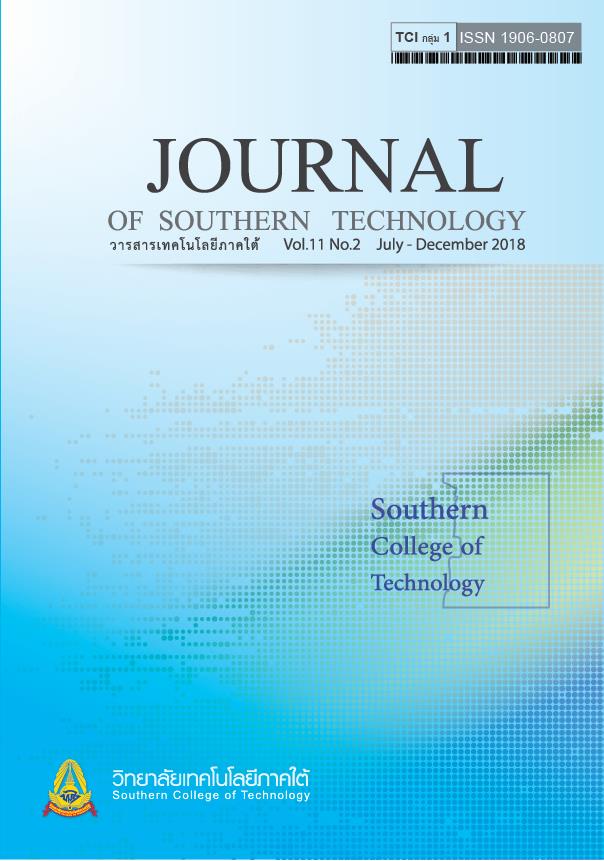The Key Success Factors of Collaborative Network for Enhancing Green Tourism in Khao Kho District, Phetchaboon Province
Main Article Content
Abstract
Khao Kho is renowned nationally as a relaxing tourist destination in Thailand. Since a decade, this place has been intensively driven by conventional tourism. The rapid growth of tourists in the last five years causes a negative impact to natural environment; especially Khao Kho is a fragile area of limitation in land utilizations. This research aimed to build the Green Tourism Destination through the collaborative network of tourism actors. The paper, therefore examined (1) the Green Tourism Development Process and (2) the key success factors of the collaborative network using the qualitative method: observation, focus group and in-depth interview with 135 stakeholders and members of the collaborative network. The lessons learnt from the project were 1) A cause of the unique characteristic of Khao Kho, spatial research and destination design phases had been done carefully; Double Diamond Model was employed into this process. It is evident that the key success factors of the collaborative network relied on the collaboration between all stakeholders in the area, especially the public sector who has a role of importance and power. 2) To sustain member’s relationship, one of critical success factor is the green tourism activities should operate regularly and continuously. The main contribution of this research is the enhancement of the collaboration among tourism actors in Khao Kho through the learning processes in Green Tourism activities.
Article Details
-
Authors must agree to the journal publication rules and allow the editors to edit the manuscripts for publication.
-
Author’s right belongs to the author but Journal of Southern Technology holds the right of first publication and thus allow readers to use the article for the purpose of education but not commercial.
References
Daniela, D. (2004). Principles and Practice of Sustainable Tourism Planning, Minmisterul Transporturilor, Constructiilor si Tursimului, Autoritatea Nationala Pentru Turism, Bucuresti, Romania Pitoreasca, 2004, pp.77- 85 Eber, S. (ed.), (1992), Beyond the Green Horizon: A Discussion Paper on Principles for Sustainable Tourism, London, WWF and Tourism Concern.
Department of Tourism, Ministry of Tourism and Sports (2016). Domestic Tourism Statistics 2016 [in Thai]. Retrieved from https://www.mots.go.th/more_news.php?ci d=438&filename=index, 7 June 2017.
Fraser, C., Honeyfield, J., Breen, F., Protheroe, M., Fester, V. (2015). Critical Success Factors in Inter-Institutional Project Collaborations.Project Collaborations. Published under the Creative Commons 3.0 New Zealand Attribution Non-commercial Share Alike Licence (BY-NC-SA).
Harman, J. (2004). Factors Influencing Successful Collaboration: The Case of dKnet.
John-Steiner, V., Robert, J. W., & Minnis, M. (1998). The Challenge of studying collaboration. American Education Research Journal Winter 1998, 35(4), 773-783.
Narongrit, C., Nonsiri, P., Harfield, A., Rakngarn, J., Viriyaphong, R., Jampathong, J., Wattanaprasit, N., & Tongpleaw, J. (2017). The Development of learning process in Agricultural Collaborative Network for Enhancing Green Destination Image of Khao Kho District, Phetchaboon Province. The Thailand Research Fund (Research Report), Naresuan University, Phitsanulok Province. [in Thai]
Naoufel, C., Pouly, M., Huber, C., & Beeler, J. (2012). Lessons learned from the lifecycle management of collaborative enterprises networks: The case of Swiss Microtech. Journal of Manufacturing Technology Management, 23(8), 1129-1150.
Nonsiri, P., (2010), The Rural Tourism Development in Thailand: The Transferability of the Knowledge and the Know-How between France and Thailand, p 411.
Pedro, S. F. (2013). An Approach to Performance Management in Collaborative Networks Based on Stakeholders Key Success Factors. L.M. Camarinha-Matos et al. (Eds.): PRO-VE 2011, IFIP AICT 362, pp. 140–147, 2011. International Federation for Information Processing 2011
Pouly, M., Monnier, F., Bertschi, D. (2005). Success and Failure Factors of Collaborative Networks of SME. In: Camarinha-Matos L.M., Afsarmanesh H., Ortiz A. (eds) Collaborative Networks and Their Breeding Environments. PRO-VE 2005. IFIP-The International Federation for Information Processing, vol 186. Springer, Boston, MA.
Sprangers, T. (2016) How Design Thinking can Improve your Destination’s visitor Experience. Retrieved June 22, 2018, from https://destinationthink.com/design-thinking-improve-destinations-visitor-experience.
Stensson, E. J., & Wessman, M. (2015). Success Factors for Collaborative Innovation in Silicon Valley. Lund University.
Swarbrooke, J. (2001). Sustainable Tourism Management (2nd ed.). London: CAB International.
Wei-Skillern, J., & Silver, N. (2013). Four network principles for collaboration success. The Foundation Review, 5(1), 121.129.

